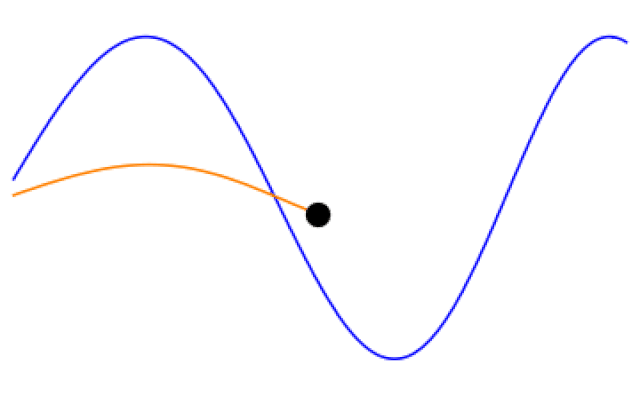Think of forced oscillation and resonance as a rhythmic dance of forces and frequencies that harmonize to create awe-inspiring phenomena all around us.
Forced Oscillation:

To kick off our exploration, let’s talk about Forced oscillation, a captivating phenomenon where an external force continuously drives an object to oscillate. Imagine it as a rhythmic push or pull applied to an object, compelling it to move back and forth. Whether it’s a swing pushed by someone’s hand or a pendulum moved by a motor, external forces are at play, orchestrating the mesmerizing dance of oscillation.
Forced Oscillation introduces new dynamics, as the object’s natural frequency interacts with the frequency of the driving force. It’s like adding a beat to a melody, resulting in intricate patterns of motion.
Resonance: The Harmony of Vibrations
Now, let’s look at resonance, a state where an object vibrates with maximum amplitude due to a matching external frequency. Imagine pushing a swing at just the right time, causing it to swing higher and higher with each push. This phenomenon occurs when the frequency of the external force matches the object’s natural frequency.

Resonance is like a symphony of vibrations, where objects respond in perfect harmony to the external forces acting upon them. From musical instruments producing rich tones to bridges swaying in the wind, resonance showcases the interconnectedness of frequency and motion.
Forced Oscillation and Resonance:
Now that we’ve explored Forced Oscillation and Resonance separately, let’s talk about their captivating interaction. When a forced oscillation is in sync with an object’s natural frequency, resonance occurs. This interaction leads to an amplification of the object’s motion, as it absorbs energy from the driving force.
Picture a tuning fork vibrating at its natural frequency when struck by a mallet. The sound you hear is a result of resonance, where the tuning fork’s vibrations match the frequency of the sound waves it produces.
Related Terms:
As we navigate the harmonious world of Forced Oscillation and Resonance, let’s discuss some related terms:
- Natural Frequency: The frequency at which an object naturally oscillates when disturbed and left to vibrate freely.
- Amplitude: The maximum displacement of an oscillating object from its equilibrium position.
- Damping: The gradual decrease in the amplitude of oscillations over time due to the dissipation of energy.
FAQ Time:
Can any object experience resonance?
Objects with a defined natural frequency can experience resonance when an external force matches that frequency.
Can resonance be harmful?
Yes, resonance can lead to catastrophic consequences, like the collapse of bridges due to synchronized vibrations caused by external forces.
How does damping affect resonance?
Damping reduces the amplitude of oscillations, which can affect the resonance phenomenon by dampening the energy transfer between the external force and the object.
Activities to Do Related to Forced Oscillation and Resonance
Swing Push Experiment:
Push a swing at different frequencies and observe how resonance occurs when your pushes match its natural frequency.
Tuning Fork Symphony:
Strike a tuning fork and hold it near a cup filled with water. Observe the water’s response as the tuning fork’s vibrations create ripples.
Resonance Tuning:
Play with a musical instrument, adjusting its strings’ tension to find the resonance point that produces the richest sound.

